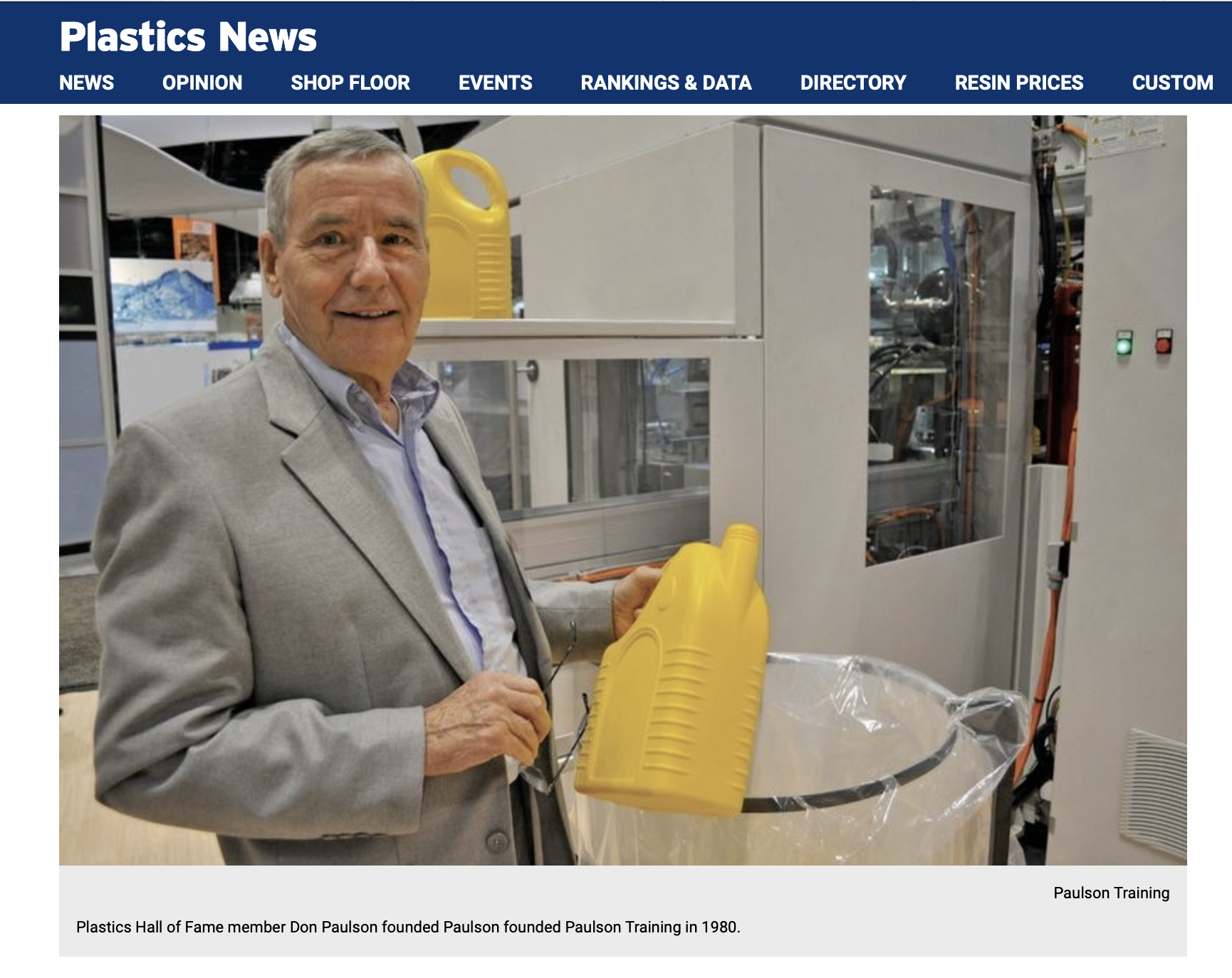“Swift and resolute action leads to success. Self-doubt is a prelude to disaster.”
From “Cato” by Joseph Addision, 1713
Here’s a common production floor situation that we’ve seen over the years…
An injection molding company (or extruder, blow molder or thermoformer) contacts Paulson looking to find out what their workforce training options are. Presumably, the injection molding company is calling because it has become obvious to them that their production floor workforce is not where it should and could be in terms of knowledge and skills on the molding machines, materials, troubleshooting part defects and any number of other issues. They need that situation fixed, usually fast. They can’t hire their way out of it because there aren’t any qualified people in the area to hire.
 Implied in the conversation is that they understand their under-trained workforce is costing them money, in some cases a lot of money – tens, even hundreds of thousands of $$$.
Implied in the conversation is that they understand their under-trained workforce is costing them money, in some cases a lot of money – tens, even hundreds of thousands of $$$.
These costs appear in various ways – unscheduled downtime, excessive cycle times, rejects and scrap, damage to molds and equipment, the list goes on.
So as a company that has considerable expertise in the plastics training industry, we start by asking questions to find out more about their situation. We ask about the problems they are encountering, how much these problems are costing, what they’ve done so far to correct the problems, etc. Then we can determine the specific job categories and subject matter they need to target for training in order of priority.
The end result is a comprehensive training plan that covers all identified training deficiencies and specific action plans to address them.
This comprehensive training plan will typically include:
- Interactive training courses (on-line or installed locally on company servers)
- Injection molding computer-based simulation
- On-going assessments to measure training progress
- On-site hands-on workshops to reinforce what the employees are learning (a critical part of knowledge retention and application)
- Periodic follow-up visits, conference calls and webinars to keep everything on track
It is an all-encompassing plan. Paulson Training has been doing this for 35 years so we have the system down pretty well. There’s probably not a scenario that we haven’t come across before. This is not to sound pompous or to be taken as bragging. Any company that has been successfully doing their job for 30+ years is probably pretty good at it. Our training plan recommendations work, as long as they are implemented properly. That is why we like to stay in close contact with our clients.
So we have developed a plan of attack and then we present the plan to all the appropriate people in the plant which usually includes the production department, one or more technicians, engineering, maybe finance and upper management who ultimately make the decision of whether to spend the money or not.
What is the first thing we hear when we make our presentations? It is often some variation of “It sounds expensive“, “That’s a lot more than we were budgeting for“, “That is way more than we can  afford“. Sometimes we’ll get something along the lines of “Do you have ROI information to back up what you’re proposing” (Yes we do. See our ROI Calculator).
afford“. Sometimes we’ll get something along the lines of “Do you have ROI information to back up what you’re proposing” (Yes we do. See our ROI Calculator).
The irony here is that the original inquiry was made because of the company’s own recognition that the under-trained workforce was costing them money.
They rarely know exactly how much, but in the initial assessment, we can make fairly accurate estimates of what the annual number is by asking the right questions. And it is ALWAYS far more than our proposed training solution. No exceptions. Full stop.
Our customers are smart people running good companies. But there has been for many years and still is a disconnect between what is called “soft spending” like spending money on training and “hard spending” like spending on equipment. There is a strong bias towards the equipment side. One reason is that your carefully crafted spreadsheet can take specific numbers on proposed capital investments and calculate Internal Rates of Return, ROI’s, etc. So management can easily see the projected ROI – “This new machine will pay for itself in 18-24 months”. There is a comfort level in that certainty that appeals to management and owners. There’s nothing wrong with that, but it is too narrow a focus. There are other investment opportunities. Like your people, and their skills and knowledge.
Well, your new training program will pay for itself in 6 months or less. We can document that.
So back to the title of this blog post – “He Who Hesitates is Lost”. Whether you believe that investing in your workforce has a measurable ROI or not isn’t really the question. Whether you believe in gravity or not, it still exists. Injection molding training done right works.
Companies obviously know at some level that they need a better trained plastics production workforce. Otherwise, our phones wouldn’t ring. That psychological leap between knowing the problem exists, knowing how to fix it then agreeing to spend the money to fix it has to be bridged. And it is by the most successful processors.
Dymokek, the 2017 Plastics News Processor of the year, is a long-time Paulson customer. They wouldn’t even consider cutting back on their employee training programs.
Neither would all of the Processors of the Year since 2000. They’ve all been long-time Paulson customers. The Paulson Training System becomes an integral part of our customers’ production systems. Those that fully adopt the training are no more likely to stop training than they are to stop buying resin. What could be better for a plastics processor than to know that you have a proven system in place that will produce a steady stream of fully qualified employees of every level on demand? That gives you a very deep bench and a lot of power. Pricing power, squash the competition power.
If you’re hesitating on implementing a formal training program because of the cost, seriously think about what the impacts of that decision are. We understand how you feel about spending money on training. Many of our best customers felt the exact same way about their plastics training investment. What they found out after implementing the training is that their initial expenditure was trivial compared with the day-in and day-out cost savings and profit increases they experience from a well-trained workforce keeping an efficient production floor humming.




